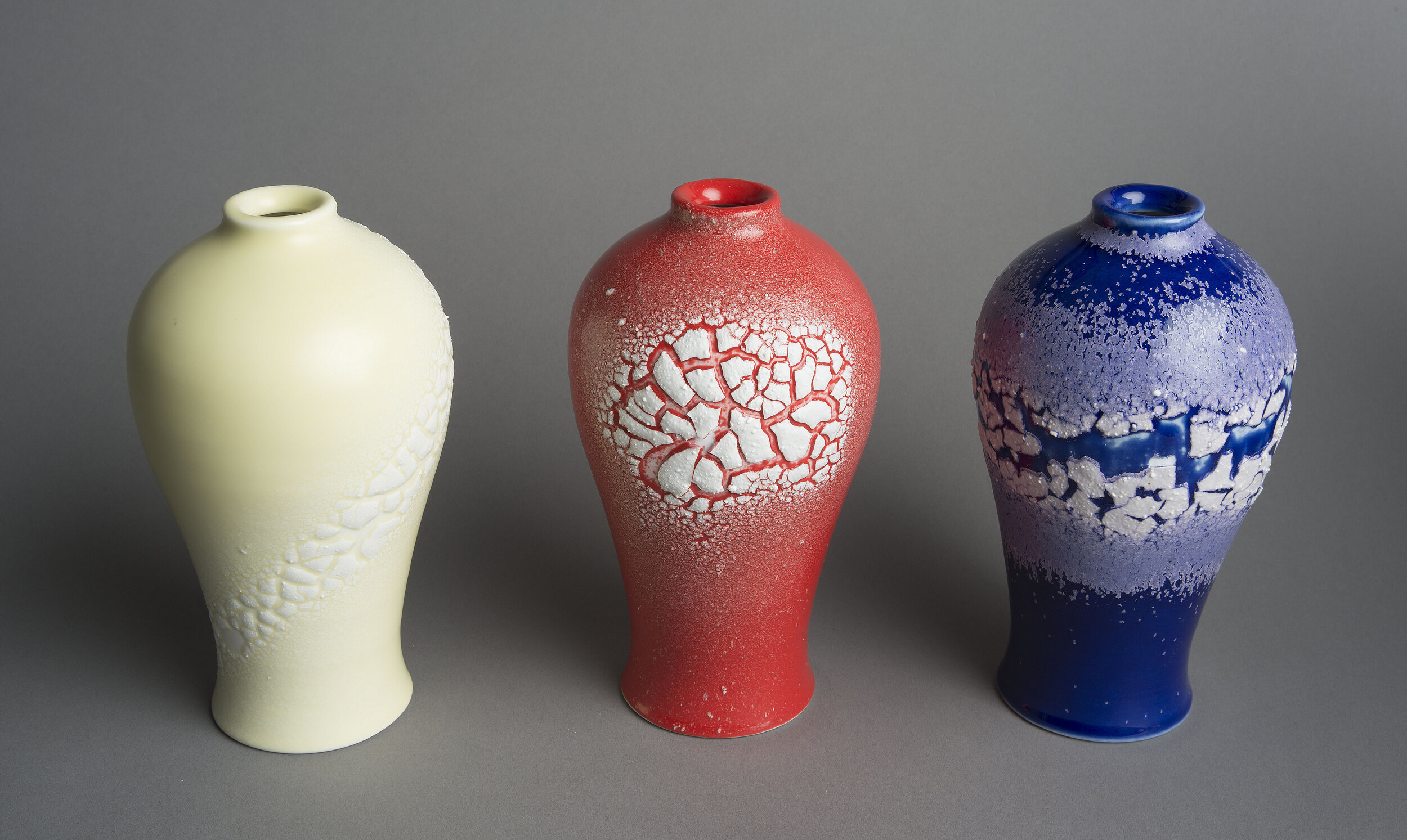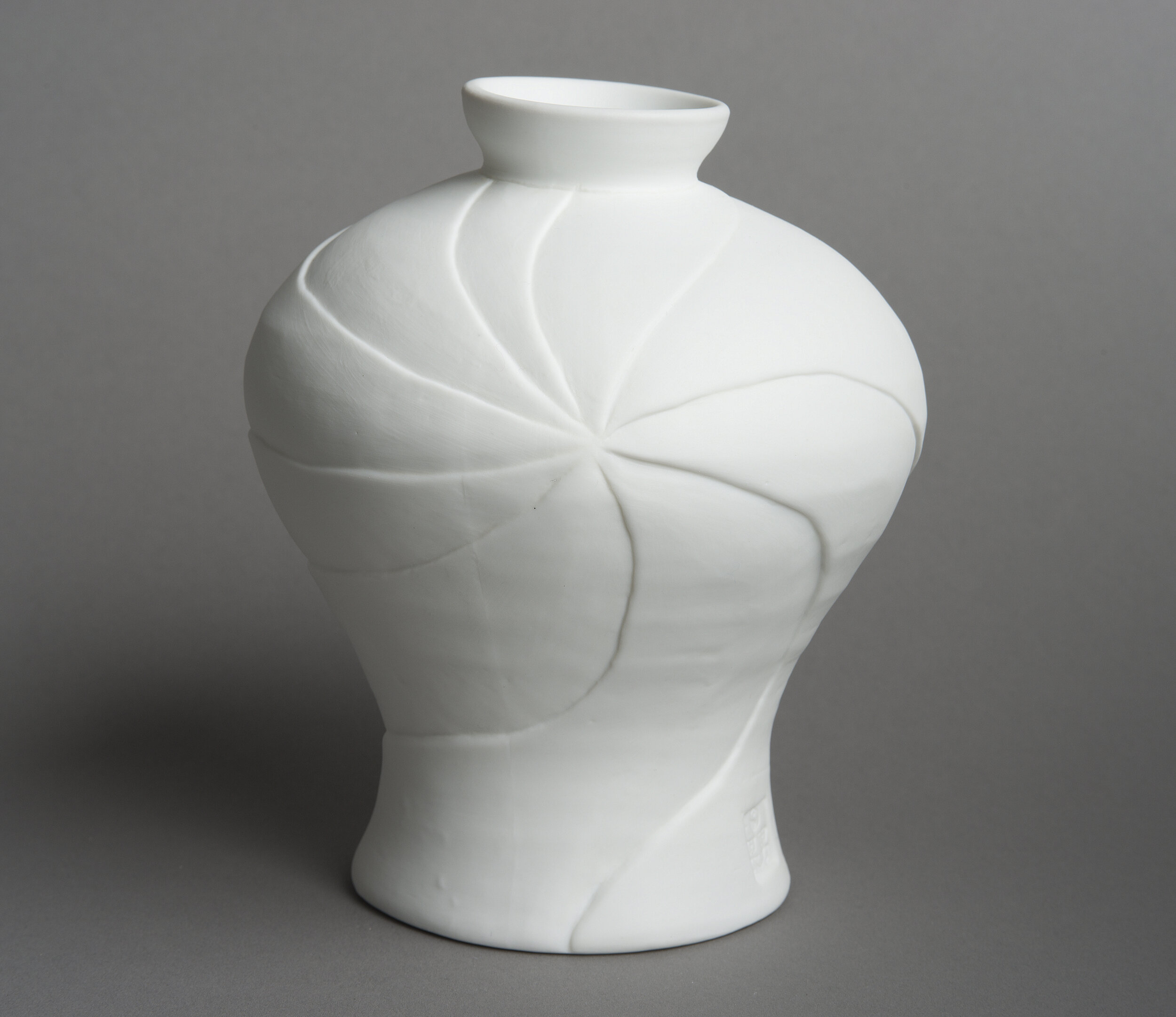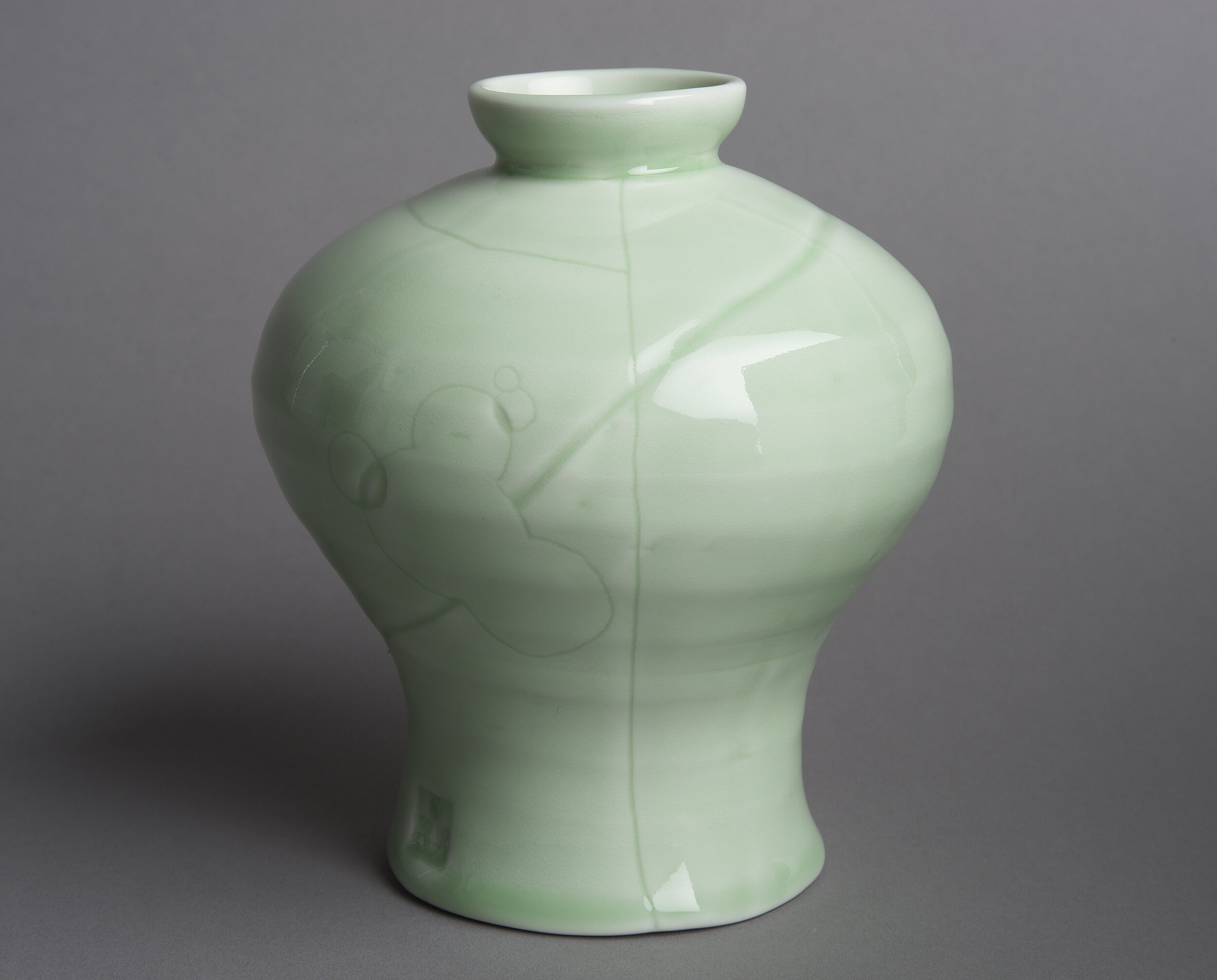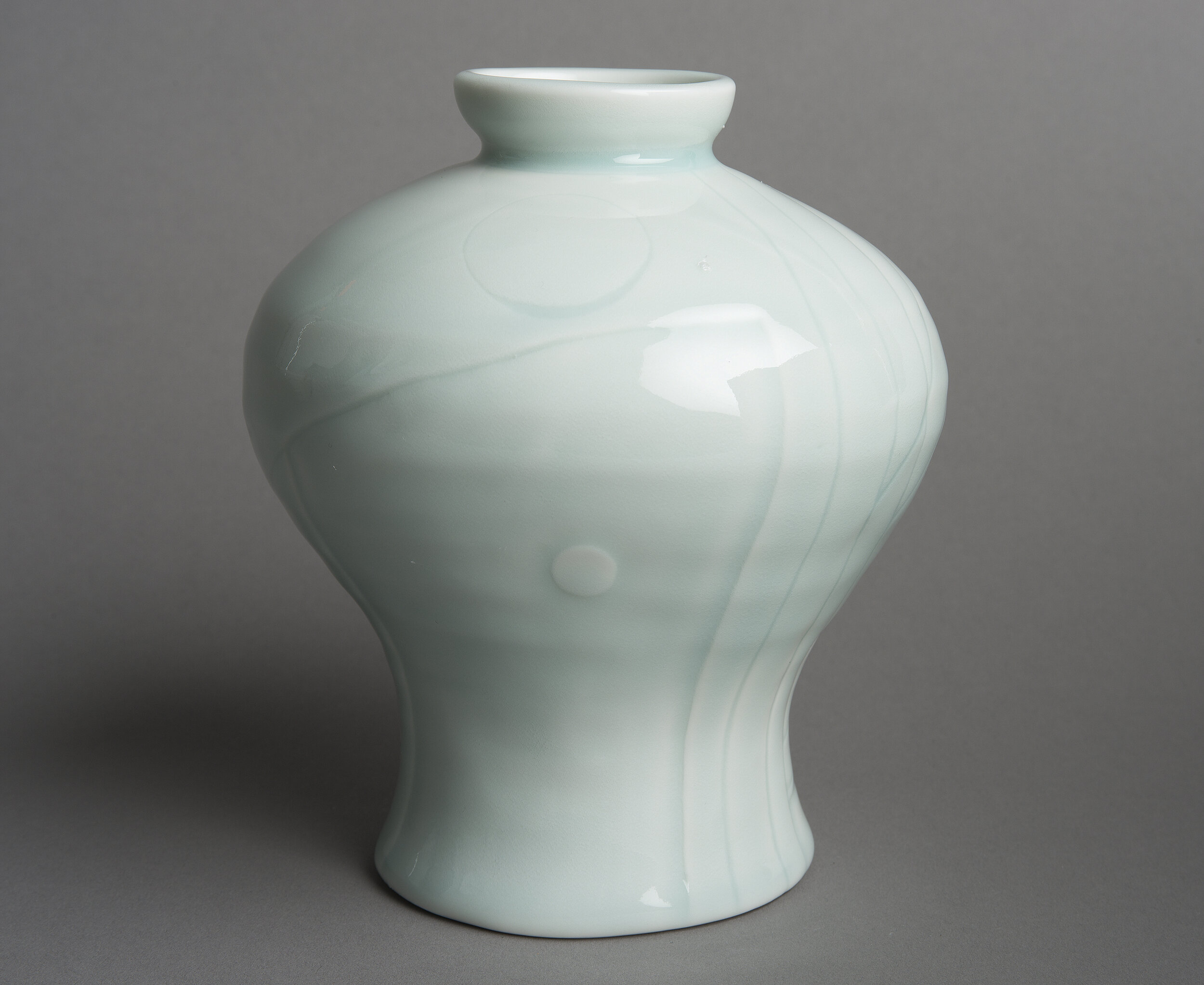Jingdezhen Porcelain, 2015
Jingdezhen is a bustling historical city that focuses on all steps of ceramic art production: local raw material collection to make clay and glazes, throwers and trimmers who embody the skill and essence of historical porcelain production, education centers that offer pottery classes to the community, ceramic studios to produce ceramic work, and many crafts markets selling the ceramic art work. For me, as a student of ceramics and Chinese, Jingdezhen is the ideal city to do research and make art in. Jingdezhen has a rich ceramic legacy that includes the intricate Song dynasty functional "dingware," as well as the Ming and Qing dynasty porcelain "meiping" bottles that reflect the elegance and complexity of China's rich cultural history. The ancient Chinese forms that inspire my own ceramics are intricate. They are difficult forms to make, particularly when using porcelain. They are very round, voluminous pots that have small openings on the tops. Producing these forms requires an immense amount of time, practice, technical skill, and near-perfect execution. My current work heavily references the meiping bottles of the Qing dynasty, but I have much more to learn in the ways of wheel throwing these elaborate ancient forms. One of the goals of my research project is to learn to work with Jingdezhen porcelain. In addition, I want to address issues of scale in my pieces: weight distribution, aesthetics of proportion, glaze and surface design exploration. As I study historic production techniques while interacting with local artists and nearby institutions, such as art galleries, Sanbao Ceramic Art Institute, and the local raw material sites, I will connect the pieces of historical production to better understand every stage of ancient porcelain production and how it can improve my own art.
While in China, I prioritized time to visit local throwers and trimmers, have dialogues to get to know their experiences with and reasons for making ceramics, and to build strong relationships with young Chinese artists and utilized the throwers and trimmers’ knowledge of centuries of Jingdezhen porcelain work to answer my questions about this unique material. Interacting with this community for an extended period of time allowed me to establish a sense of community with the other artists who work there. I was able to hear their viewpoints about what it means to be Chinese, and even what they think it means to be American or navigate any particular identity. Learning to appreciate the nuance in experience and mindset of people from very different cultures abroad helps me to become more global-minded as I continue to navigate a culturally complex world of international ceramics throughout my career as a ceramic artist and educator. I also sought to better understand the nuances of societal structures and socio-political landscapes during the production of Chinese Song, Yuan, and Qing dynasty bottles, as well as to have a new lens for developing my own work.














